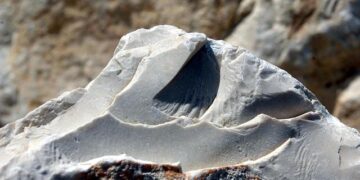Transforming Biodiversity Evaluation with Airborne eDNA Shotgun Sequencing
A recent study featured in Nature introduces a revolutionary method that could significantly alter our comprehension of biodiversity. This research employs shotgun sequencing techniques on airborne environmental DNA (eDNA), allowing for swift and thorough evaluations of entire biological communities. This advancement provides remarkable insights into population genetics and genomic diversity across various ecosystems. As the urgency surrounding biodiversity decline and ecological monitoring intensifies, this technique not only enhances our environmental management capabilities but also lays the groundwork for more effective conservation initiatives. By tapping into the eDNA present in our atmosphere, scientists are pioneering new avenues in ecological studies and biodiversity evaluation, fundamentally reshaping our relationship with nature.
Transforming Biodiversity Evaluation with Airborne eDNA
The introduction of shotgun sequencing technology marks a pivotal moment for biodiversity evaluation, enabling researchers to extract extensive genetic data directly from airborne eDNA. This innovative technique facilitates the swift identification of species across varied ecosystems, capturing diverse organisms without relying on conventional sampling methods. The primary advantages of this cutting-edge approach include:
- Accelerated Results: Traditional methods for assessing biodiversity can span months or even years; however, shotgun sequencing drastically shortens this timeframe to mere days.
- Thorough Analysis: Researchers can examine entire biomes comprehensively, yielding valuable information about ecosystem health and interspecies relationships.
- Dive into Genomics: This method allows exploration of population genetics and genomic diversity, revealing evolutionary patterns within species.
A recent investigation published in Nature, demonstrated the successful implementation of this technology across various habitats worldwide—from lush forests to bustling urban areas. The results not only confirmed expected flora and fauna but also uncovered rare species previously thought elusive, emphasizing shotgun sequencing’s potential role in conservation efforts. Below is a comparison table illustrating the efficiency differences between shotgun sequencing and traditional survey methods:
| Ecosystem Assessment Method | Total Time Needed | No. of Species Detected | Sized Sample Requirement |
|---|---|---|---|
| Shotgun Sequencing Technique | Dramatically Reduced Days | Covers 100+ Species Easily! | Lesser Samples Required! |
| Application Area | Potential Benefits | |
|---|---|---|
| Forestry Management | Improved monitoring leading informed logging practices | |
| Marine Conservation | Identification critical habitats/species hotspots | |




















![Forest ecology cannot be reduced to arithmetic, says M.I. Varghese [Interview] – Mongabay-India](https://earth-news.info/wp-content/uploads/2025/12/328946-forest-ecology-cannot-be-reduced-to-arithmetic-says-mi-varghese-interview-mongabay-india-350x250.jpg)










![Forest ecology cannot be reduced to arithmetic, says M.I. Varghese [Interview] – Mongabay-India](https://earth-news.info/wp-content/uploads/2025/12/328946-forest-ecology-cannot-be-reduced-to-arithmetic-says-mi-varghese-interview-mongabay-india-120x86.jpg)